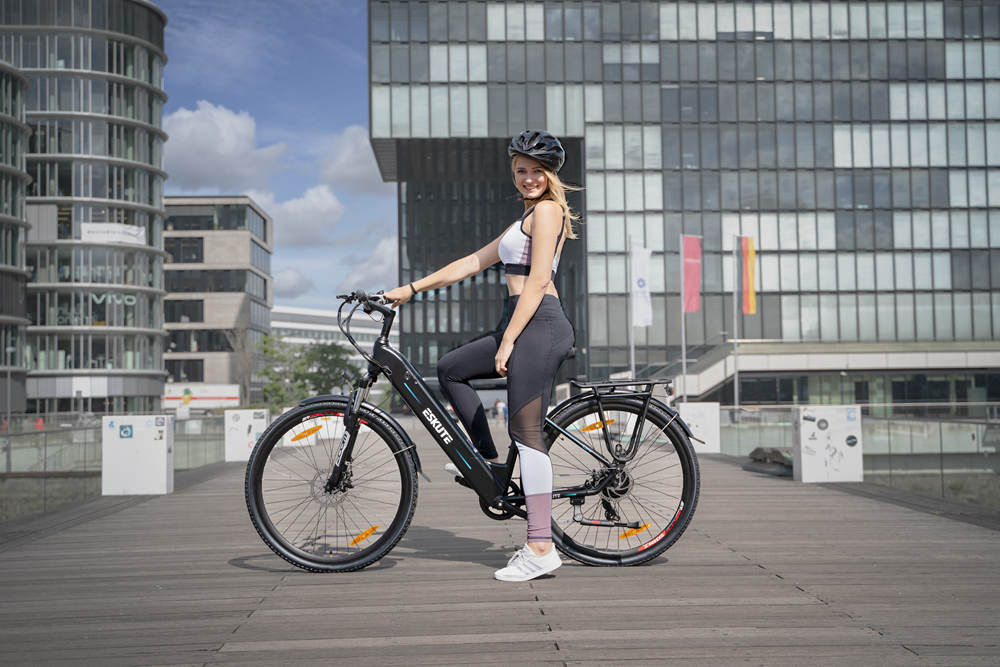Navigation
The development of electric bikes has taken the world by storm. With various innovations in the bicycle industry, you no longer have to worry about maintaining a constant speed. The question is, are full-suspension e-bikes worth the price?
Do you want an electric bike that can maintain constant high speeds and tackle rough off-road terrains? This article analyses the basics of e-bike full-suspension systems. It also highlights the pros and cons of full-suspension electric bikes.
What Is a Full-suspension E-bike?
A full-suspension e-bike consists of a component or system that suspends and insulates the rider against the vibrations and shocks emerging from riding on rough terrain. Quite intriguing, right? It makes your ride smoother and adds enjoyment to riding.
There are four different types of suspension systems, including;
- Hydraulic
- Spring
- Pneumatic
- Resistance rubber.
Now, let us look at these four in-depth.
- Hydraulic suspension system: This is an efficient power transmitter and an excellent shock absorber. It's a light fluid system that can cope with heavy weights and offers constant force even when you change your speed. It's economical, safe, simple and does not require regular maintenance. Moreover, it does not cause any sparks, hence is safe for riding in mines and chemical plants.
- Spring suspension system. Commonly known as spring damping, this suspension type allows the bike to control compressions and rebounds. It is the most used, thanks to its lower cost and efficient shock absorption.
- Pneumatic suspension system. The name says it all. The pneumatic or air-operated system uses pressurized air generated by the compression of the sealing gas to absorb shocks. Because of the air, it has super lightweight and is a perfect choice for many riders.
- The resistance rubber suspension system is lighter than the spring suspension system with lower maintenance. It is applicable alongside the spring system to stiffen it against deflection.
This YouTube video illustrates how a full-suspension system works:

What Should I Consider When Buying an E-bike Full Suspension?
Purchasing an e-bike takes a better part of your budget. Therefore, you will need to ensure you are making the right choice. Here are the factors to consider before purchasing your favourite e-bike with full suspension:
Battery Size
When looking for a new e-bike, everyone wants to know how much power the bike has. It's best to understand that the battery size determines the number of power watts it has. Of course, you will want a bike with as high power as you can afford.
Choosing your battery size, however, depends on how you intend to use your e-bike. If you plan to use the e-bike with full suspension in trailing, there is no need for a big-sized battery.
However, if you plan to ride on rough terrains such as mountain biking and other rough terrains, you should consider a large-sized battery.
Type of Motor
While you can swap the other e-bike components, the motor is integral to the frame and part of the bike, hence cannot be upgraded. It is crucial, therefore, to get your preferences right.
The best-placed motors are mid-drive motors; they balance power and weight, give you maximum pedal assistance and do not hold the bike back or weigh it down.

Maximum Suspension Travel
Suspension travel refers to the spring's compression or elongation when force is applied or removed. So, what's the maximum distance the e-bike can go and compress to absorb shock and vibrations?
Bike manufacturers conveniently categorize bikes depending on the most suitable terrain for each design which approximately equates them to the maximum suspension travel they have.
Here are a few factors to help you know if you need short travel or long travel full-suspension e-bike.
- Enduro bikes. These have maximum suspension travel of 150-180 mm, and a stanchion diameter of 35-38mm. They are suitable for the roughest terrains.
- Trail riding. Have a travel distance of 120-150mm, with a 34mm stanchion diameter. This bike straddles between the enduro and cross-country bikes.
- Cross country. These bikes have a travel distance of 100-120 mm with a stanchion diameter of 30-32mm and are best suited for short travels.
- All the mountain bikes have between 130-160mm of travel distance and a stanchion diameter of 34-36 mm. They can handle any terrain and are suitable for mountain biking, just as the name suggests.
- Downhill bikes have a travel distance of 180-200mm and a stanchion diameter of 40mm. They are compatible with highly technical terrains.
From Whom Should You Buy?
Before purchasing your full suspension e-bike, ask yourself where you will get the best service. Your bike's brand and the vendor you buy from determining if you have a quality, durable, and high-performing e-bike.
To identify a genuine and reputable bike dealer, you may ask yourself questions including; is it a modern and fully stocked shop? How many customers stream in every hour or so?
A trusted and convenient dealer has the good technical know-how, doubles as a point of contact if any issues arise, and offers good after-sales services. If the vendor mainly deals with bikes, they will have enough knowledge of all things e-bikes.
Besides selling the e-bike, the dealers should offer advice on maintaining it well, using it, and even the best bike for specific needs.

Pros and Cons of E-bike Full Suspension
Let's look at the pros and cons of a full-suspension electric bike.
Pros
- Greater comfort: Full suspension bikes offer easier riding and comfort thanks to the comprehensive shock absorbers that reduce strains on bumpy rides and uneven terrains. If you want to ride over a rough trail without getting sick and getting bruises, then a suspension is a must-have.
- Have greater control. Suspensions help tires stay on the ground and improve the bike's traction. Therefore, they offer you greater control over your bike.
- They are durable. E-bike suspension systems have high durability and easier maintenance. By absorbing the shocks on uneven terrains, your e-bike will be free from getting worn out faster than it would have been without the suspensions.
Cons
- They are expensive.
- Require regular maintenance. E-bike full suspensions require oil changes and seal replacements for the long-term overall performance of your e-bike.
- Hefty weight. Due to the electronic components, electric bikes can weigh 25 kgs or even more. Anyone who has ridden on an e-bike knows they are heavier than conventional bikes. Because of their heavy weight, transporting them can be challenging, especially if your house is not on the ground floor. You might also need a little more space to store them.
Pro tip: This heavyweight is part of the design, with heavier e-bikes offering better comfort and shock absorption.

Conclusion
Regardless of the advantages and disadvantages of any e-bike with full suspension, it is more important to consider your budget, riding conditions, and riding style when buying your favourite e-bike. No type fits all.
However, should you get into a dilemma, contact us at Eskute for expert advice and guidance on the right e-bike full suspension for your needs.










Leave a comment
This site is protected by hCaptcha and the hCaptcha Privacy Policy and Terms of Service apply.